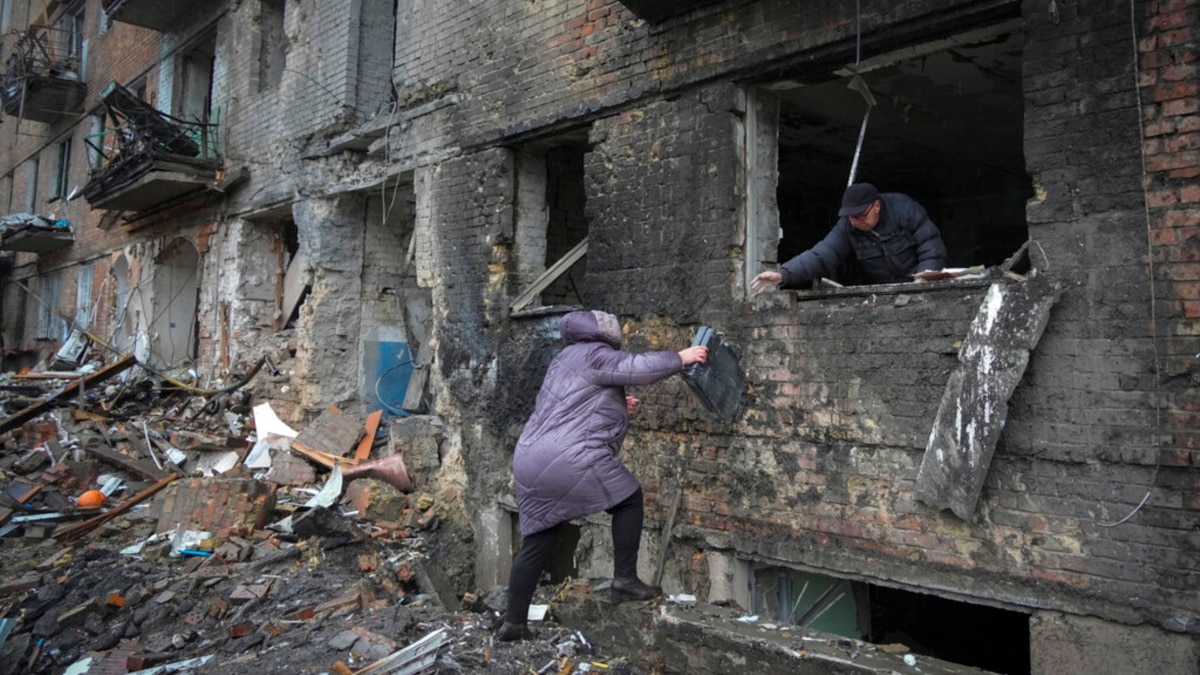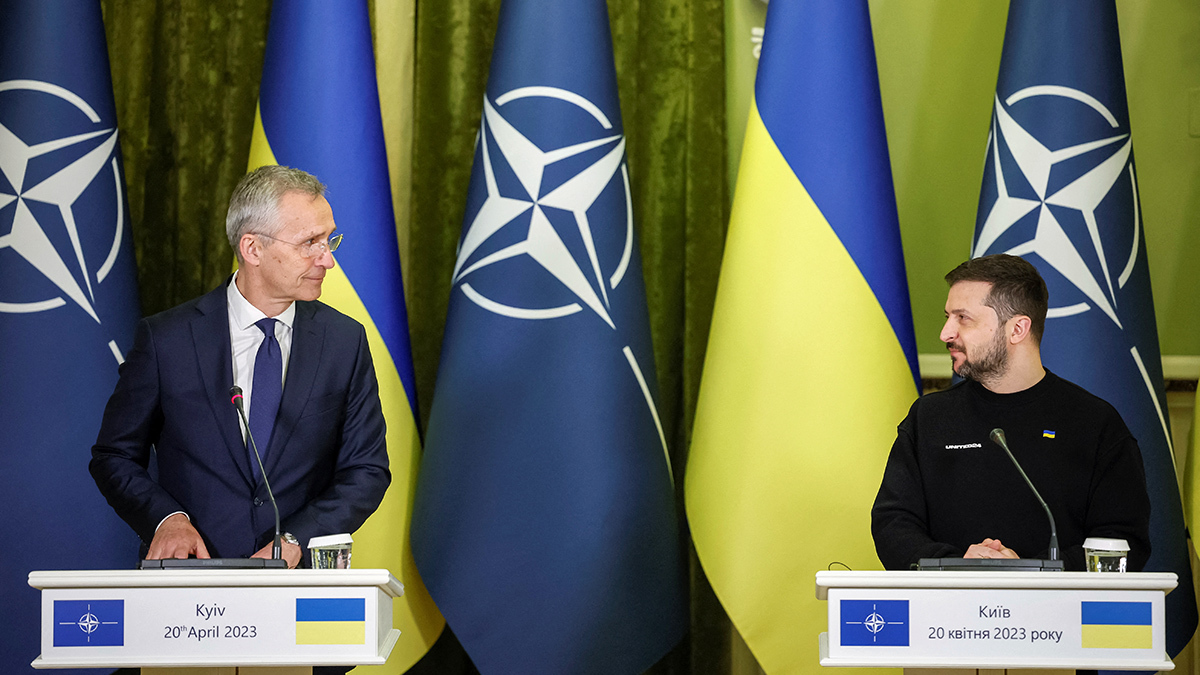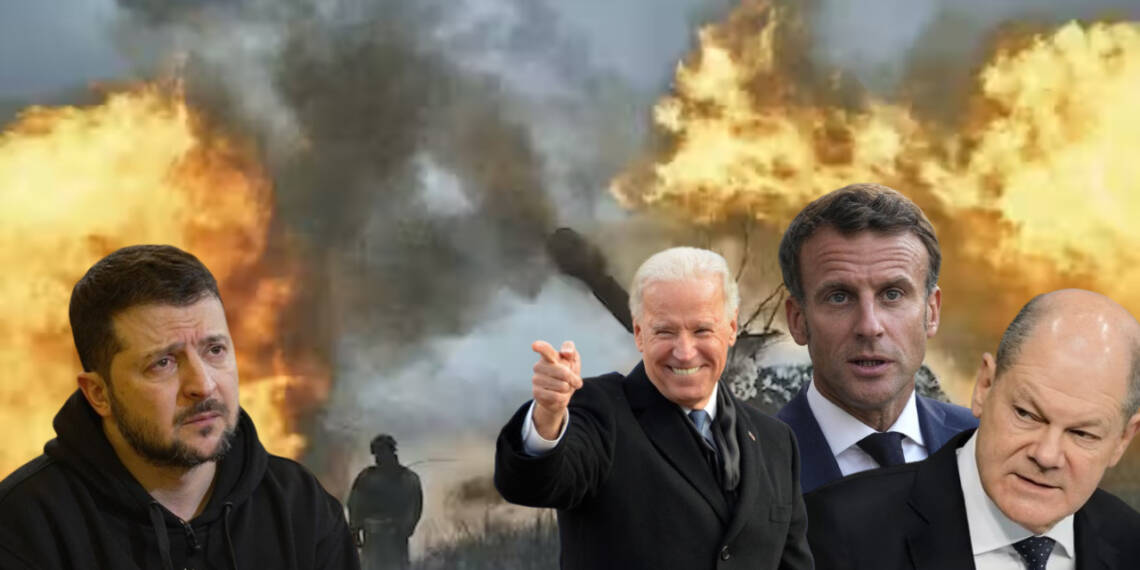The war with Russia has had a profound impact on Ukraine, affecting its population, infrastructure, and economy in various ways.
One of the most striking effects has been on Ukraine’s population. Before the war, the United Nations Department of Economic and Social Affairs estimated Ukraine’s population at 44.6 million in July 2022. However, the current estimates indicate a drastic population loss, ranging between 14 to 17 million people. This loss accounts for more than one-third of the pre-war population, highlighting the severe impact of the conflict. A staggering 78% of individuals surveyed reported having close contacts impacted by the conflict, either through casualties or injuries.
The displacement of people due to the war has been widespread. According to the United Nations High Commissioner for Refugees (UNHCR), as of October 2023, there are approximately 6.4 million registered Ukrainian refugees across Europe. This number reflects the scale of the humanitarian crisis, as millions have sought safety beyond Ukraine’s borders. Additionally, UNHCR data reveals that about 2.9 million people have moved to Russia willingly. This migration pattern further underscores the widespread displacement caused by the conflict.
Read More: US’ latest financial package for Ukraine is ridiculously small
Internal displacement within Ukraine is also a significant issue. The International Organization for Migration (IOM) estimates that between 7 to 8 million people were internally displaced as of September 2023. These individuals have been forced to leave their homes but remain within the country, often facing uncertain and challenging conditions.

The war has also inflicted severe damage on Ukraine’s infrastructure. Estimates suggest that the cost of this damage ranges from $120 billion to $220 billion as of June 2023. This figure illustrates the extensive destruction inflicted on buildings, roads, and other critical infrastructure, severely hampering the country’s ability to function normally.
The Ukrainian economy has been significantly affected by the war. It continues to struggle, surviving primarily due to international aid and resilience efforts. Many industries in Ukraine have suffered greatly; they have either been completely demolished, shut down, or relocated to neighboring countries such as Poland. This economic disruption has compounded the challenges faced by the country, affecting employment, production, and overall economic stability.
Join us at Telegram: https://t.me/tfiglobal
Marked by the war’s brutality, Ukraine’s future landscape will reflect losses in both land and people.
Before the conflict escalated, Ukraine had already lost Crimea to Russia in 2014. This was a significant territorial loss for the country. As the war has progressed, Ukraine has also lost control over the Donbas region. This region, comprising Donetsk and Luhansk, has been a focal point of conflict and has experienced significant turmoil and destruction. The loss of both Crimea and Donbas represents a substantial reduction in Ukraine’s territorial integrity.
Furthermore, Ukraine may lose even more territory. This includes the possibility of losing access to the Black Sea, a crucial economic and strategic waterway. Losing access to the Black Sea would not only have significant economic implications for Ukraine, particularly affecting trade and maritime activities, but it would also represent a strategic setback in terms of regional influence and security.
One of the significant political consequences of the war is the impact on Ukraine’s aspirations to join the North Atlantic Treaty Organization (NATO). Before the war, there was some discussion and hope within Ukraine of joining this military alliance. However, the current situation has drastically altered this prospect. National Security Council Advisor Jake Sullivan has pointed out the stark reality that allowing Ukraine to join NATO at this stage would essentially mean a direct war with Russia. This statement underlines the high stakes and risks involved in expanding NATO membership to include Ukraine during an active conflict with Russia.

Moreover, NATO Secretary-General Jens Stoltenberg has clarified that a prerequisite for Ukrainian membership in NATO is a peace treaty between Ukraine and Russia. Given the ongoing hostilities and the absence of any peace treaty in sight, the possibility of Ukraine joining NATO appears increasingly remote. This situation leaves Ukraine in a challenging position, seeking security assurances and support without the prospect of NATO membership.
The war with Ukraine has had a substantial impact on various aspects of Russia, particularly its defense budget and economic standing.
Before the conflict with NATO-backed Ukraine in February 2022, Russia’s defense budget was set at 4.7 trillion rubles, which was about $61 billion at that time. Since the onset of the war, there has been a dramatic increase in this budget. It is projected to nearly double, reaching 10.78 trillion rubles (approximately $109 billion) by 2024. This increase in the defense budget is significant. It marks a substantial boost for the domestic defense industries in Russia. In the upcoming budget, defense spending is expected to account for 29.4% of the total planned expenditure. This shift indicates a major focus on military spending and investment in defense capabilities.
Simultaneously, Russia’s economy has shown remarkable growth amidst the war. According to data from the International Monetary Fund (IMF), Russia’s Gross Domestic Product (GDP), when adjusted for purchasing power parity (PPP), overtook Germany’s in the third quarter of 2023. This advancement positions Russia as the fifth-largest economy in the world and the largest in Europe. This achievement is particularly noteworthy considering the economic sanctions imposed by Western countries. These sanctions were anticipated to pose significant challenges to the Russian economy. However, the actual economic outcomes have defied these expectations.
Read More: Tunisia’s economic gambit: no to IMF’s food and energy cuts, yes to BRICS moves!
There were concerns and speculations, especially from Western sources, regarding Russia’s ability to maintain its military efforts, particularly in terms of ammunition replenishment and overall sustainability in the prolonged conflict with Ukraine. Despite these concerns, Russia’s economic performance suggests a level of resilience and adaptability in the face of international pressure, that the west never dreamed off.
Now that we have examined how the two countries are emerging from the war – one ravaged and the other buoyant – let’s delve into understanding the six signs the world overlooked that indicated a potential rout of Kyiv even before the war began.
- US Policy and Kyiv: Kyiv’s fate was often considered secondary in US policy circles. For the Biden administration, the focus on Ukraine appeared more as a strategy to bolster international standing following the debacle in Afghanistan. This approach suggests that Ukraine’s strategic importance was possibly overestimated or misunderstood by US policymakers.
- Underestimating Russia’s Resolve: The United States seemingly miscalculated Russia’s intentions, assuming that threats of war over Ukrainian neutrality were mere bluffs. This misread was partly based on Russia not responding aggressively to Ukraine’s actions in 2021, and the situation seemingly de-escalating. Moreover, the West misinterpreted Russia’s lack of support for Armenia during the Nagorno-Karabakh conflict as a sign of weakness, failing to recognize the potential for a more assertive Russian stance in Ukraine.
- Ukrainian Dependence on Western Support: Ukrainian leadership, particularly President Zelensky, appeared to have overestimated the extent of direct military support from the West. Zelensky’s belief in NATO’s physical intervention led to a more confrontational stance towards Russia. However, when the war commenced, the Western response primarily comprised monetary aid, military supplies, and sanctions against Russia, rather than boots on the ground.
- Misreading Russia’s Military Strategy: In the early months of the conflict, Russia’s military performance was perceived as lackluster by the West, leading to the conclusion that Ukraine could defeat Russia. This perception overlooked Russia’s strategic approach, which initially focused on Donbas. The West’s misunderstanding led to increased financial and military support for Ukraine. However, when the narrative of a Ukrainian victory gained traction in the media, Russia intensified its military operations.
- Ignoring the Peace Treaty Draft: Rejecting a draft peace treaty before the invasion and encouraging Ukraine to fight against Russia was a critical error. This decision, seen as “pro-Ukrainian” by some, actually escalated tensions. Peaceful resolutions are generally beneficial for all involved parties, and the rejection of diplomatic avenues angered Russia, leading to severe consequences.
- One-Sided Reporting on Casualties: Information from the West about casualties in the war has often been one-sided, focusing on high numbers of Russian casualties as reported by Kyiv, while revealing little about Ukrainian losses. This kind of biased reporting can backfire. Although it initially garnered financial support for Ukraine, the lack of balanced reporting ultimately had detrimental effects, both for Ukraine’s situation and for the credibility of global liberal media.
So there, propaganda machines in Brussels, Kiev, London, and Washington worked hard to make sure we support Ukraine, have faith, and condemn anyone who questions our internalized story. The outcomes have been dire. They have been devastating to Ukraine.
Watch More:







